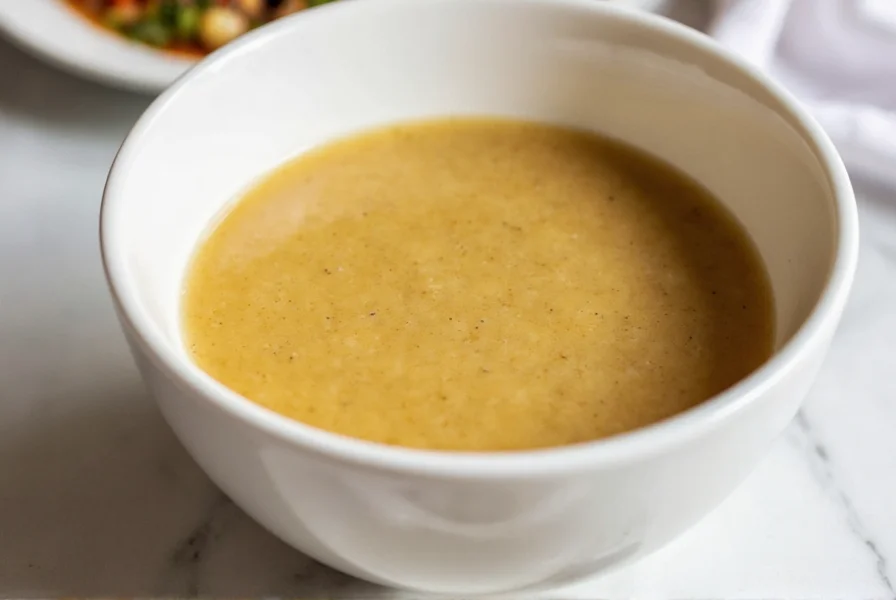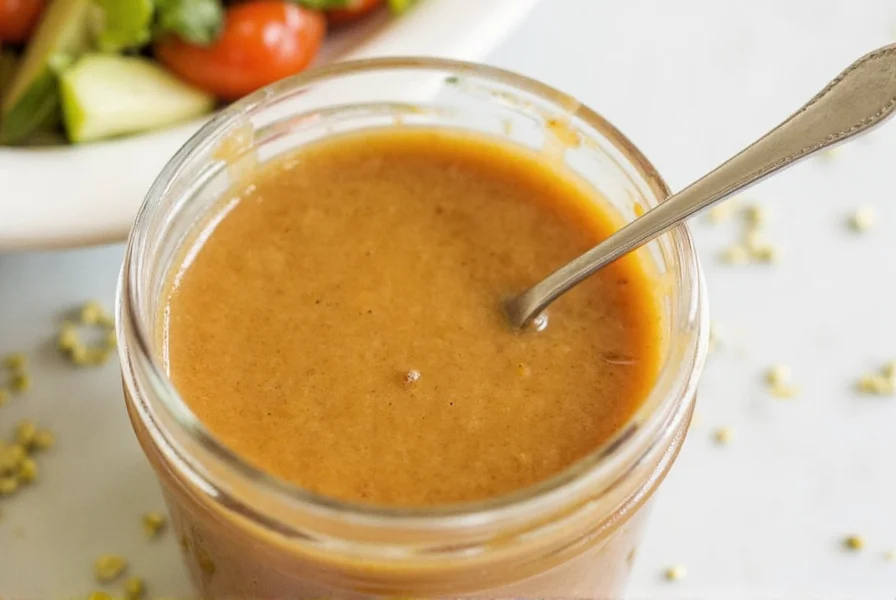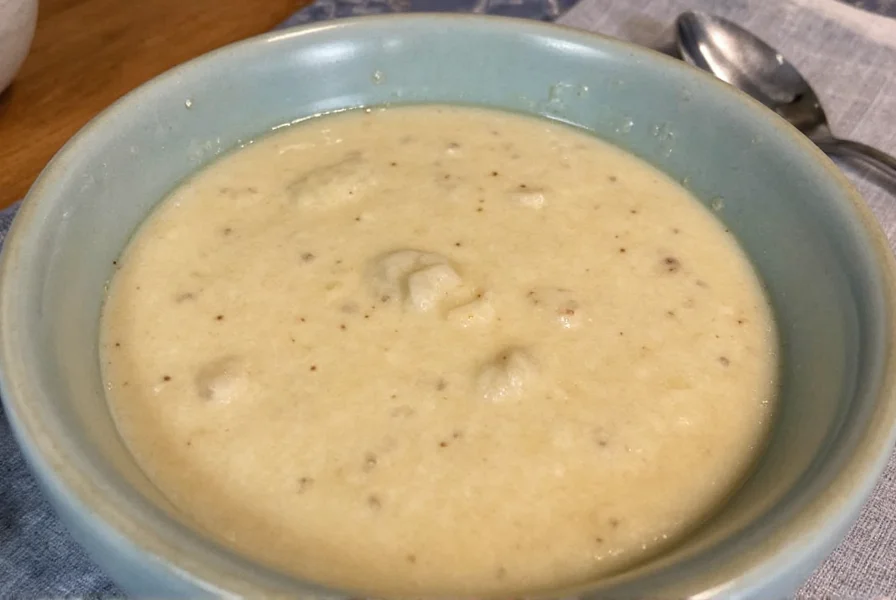Creating exceptional sesame ginger salad dressing starts with understanding the delicate interplay of its core components. Unlike store-bought versions that often contain preservatives and excessive sugar, a carefully crafted homemade dressing delivers vibrant, complex flavors that elevate simple salads into memorable dishes. The magic happens when fresh ingredients combine to create a harmonious blend where no single element overpowers the others.
The Essential Components of Authentic Sesame Ginger Dressing
Professional chefs and culinary experts agree that four elements define a superior sesame ginger dressing: quality oils, fresh aromatics, balanced acidity, and thoughtful sweetening. The foundation begins with toasted sesame oil—not regular sesame oil—which provides that distinctive nutty aroma essential to authentic Asian cuisine. When selecting ingredients for your easy homemade sesame ginger dressing recipe, prioritize freshness, especially for the ginger root, which should be firm, smooth, and free of wrinkles.
Many home cooks make the mistake of using pre-minced ginger from jars, but freshly grated ginger contains volatile compounds that create the dressing's signature zing. For optimal flavor extraction, use a microplane grater to create a fine paste that fully incorporates into the dressing. The ginger-to-liquid ratio significantly impacts the final product—too little and the dressing lacks character, too much and it becomes overpowering.
| Flavor Profile | Sesame Oil | Ginger | Vinegar | Sweetener |
|---|---|---|---|---|
| Mild & Balanced | 2 tbsp | 1 tsp | 3 tbsp | 1 tbsp |
| Medium Intensity | 2.5 tbsp | 1.5 tbsp | 3.5 tbsp | 1.5 tbsp |
| Bold & Zesty | 3 tbsp | 2 tbsp | 4 tbsp | 2 tbsp |
Step-by-Step Preparation Guide for Perfect Emulsion
Creating a stable emulsion is the secret behind restaurant-quality sesame ginger dressing that doesn't separate in your salad bowl. Begin by combining your acidic components—rice vinegar and citrus juice—in a mixing bowl. Whisk in your sweetener until fully dissolved, then gradually incorporate the soy sauce or tamari. The critical step comes next: slowly drizzle in the sesame oil while continuously whisking. This gradual incorporation allows the oil molecules to properly bind with the liquid components.
For those wondering how to make sesame ginger salad dressing from scratch with consistent results, consider using a small blender or immersion blender for the most stable emulsion. The mechanical action creates smaller oil droplets that remain suspended longer. If you prefer a creamier texture without adding dairy, a tablespoon of tahini works beautifully as an emulsifier while enhancing the sesame flavor profile.

Flavor Variations and Dietary Adaptations
One reason sesame ginger dressing for asian salads remains popular is its remarkable adaptability. For gluten-free versions, substitute tamari for soy sauce—just verify it's certified gluten-free as some brands contain wheat. Vegan adaptations simply replace honey with maple syrup or agave nectar without compromising flavor integrity.
Culinary professionals often create signature variations by incorporating additional elements:
- Spicy kick: Add 1-2 teaspoons of sriracha or a few dashes of chili crisp
- Umami boost: Include 1 teaspoon of white miso paste
- Citrus twist: Substitute half the vinegar with fresh yuzu or blood orange juice
- Herbaceous note: Blend in 1-2 tablespoons of fresh cilantro or scallion
When experimenting with customizing sesame ginger dressing recipes, remember that flavor development continues after mixing. Allow your dressing to rest for at least 30 minutes before using to let the flavors meld properly. The ginger's sharpness will mellow slightly while the sesame notes become more pronounced.
Optimal Uses Beyond Basic Salad Applications
While commonly used as salad dressing with sesame ginger flavor, this versatile condiment shines in multiple culinary applications. Its balanced profile makes it an exceptional marinade for proteins—particularly chicken, salmon, and tofu—where the acidity helps tenderize while the oil carries flavor deep into the food. For best results, marinate proteins for 30-60 minutes (never超过2 hours with acidic dressings).
Chefs also utilize this dressing as a finishing sauce for steamed vegetables, a dipping sauce for spring rolls, or even as a base for cold noodle dishes. When using as a noodle dressing, thin the consistency slightly with warm water to help it coat the strands evenly. The dressing's sweet-savory profile complements grain bowls beautifully, particularly when featuring ingredients like edamame, shredded carrots, and avocado.

Troubleshooting Common Dressing Issues
Even experienced cooks occasionally encounter issues with their homemade sesame ginger vinaigrette. Separation is the most common problem, easily remedied by vigorous whisking or blending. If your dressing becomes too thick after refrigeration, simply allow it to come to room temperature and shake vigorously.
Flavor imbalances can be corrected with simple adjustments:
- Too salty: Add a squeeze of fresh citrus or a touch more sweetener
- Too sweet: Increase vinegar or add a splash of soy sauce
- Too sharp: Add more oil or a small amount of neutral-flavored oil
- Lacking depth: Incorporate a teaspoon of toasted sesame seeds
Remember that ingredient quality directly impacts your final product. Using old, rancid sesame oil or dried-out ginger will compromise even the most carefully measured recipe. Store sesame oil in a cool, dark place and replace it every 6-8 months for optimal flavor in your authentic sesame ginger dressing preparation.
Frequently Asked Questions
How long does homemade sesame ginger dressing last in the refrigerator?
Properly stored in an airtight container, homemade sesame ginger dressing maintains peak quality for 10-14 days. The vinegar content acts as a natural preservative, but freshness gradually declines after two weeks. Always check for off odors or separation that doesn't resolve with shaking before using.
Can I make sesame ginger dressing without soy sauce?
Yes, you can substitute coconut aminos for soy sauce to create a soy-free version with similar umami depth. For a completely different flavor profile, try using mushroom broth concentrate diluted with water. Note that these substitutions will alter the traditional flavor slightly but still produce a delicious dressing.
Why does my sesame ginger dressing separate after refrigeration?
Sesame oil has a different density than liquid ingredients, causing natural separation when chilled. This is normal and doesn't indicate spoilage. Simply bring the dressing to room temperature and shake vigorously or re-blend for 10-15 seconds to restore the emulsion. Adding a small amount of Dijon mustard can help stabilize future batches.
What's the best way to grate fresh ginger for dressing?
A microplane zester creates the finest ginger paste that fully incorporates into the dressing. If using a box grater, choose the smallest holes. Always peel ginger with a spoon (which follows the contour better than a knife) before grating. For maximum flavor extraction, press the grated ginger with the back of a spoon to release all juices into your dressing mixture.











 浙公网安备
33010002000092号
浙公网安备
33010002000092号 浙B2-20120091-4
浙B2-20120091-4